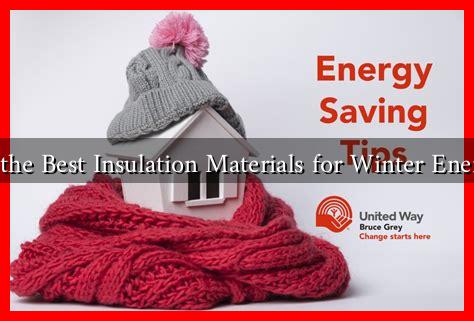-
Table of Contents
What Are the Best Insulation Materials for Winter Energy Saving
As winter approaches, homeowners and businesses alike are looking for effective ways to save on energy costs while maintaining a comfortable indoor environment. One of the most effective strategies is to invest in high-quality insulation materials. Insulation not only helps to keep the heat in during the cold months but also reduces energy consumption, leading to lower utility bills. In this article, we will explore the best insulation materials for winter energy saving, their benefits, and how to choose the right one for your needs.
Understanding Insulation and Its Importance
Insulation works by slowing down the transfer of heat between the inside and outside of a building. During winter, effective insulation prevents warm air from escaping, thereby reducing the need for heating systems to work overtime. According to the U.S. Department of Energy, proper insulation can save homeowners up to 20% on heating and cooling costs.
Top Insulation Materials for Winter Energy Saving
When it comes to insulation, several materials stand out for their effectiveness in winter energy saving. Here are some of the best options:
- Fiberglass Insulation: This is one of the most common insulation materials. It is made from fine glass fibers and is available in batts, rolls, and loose-fill forms. Fiberglass insulation has a high R-value (a measure of thermal resistance), making it effective for keeping heat in. It is also non-combustible and resistant to moisture.
- Foam Board Insulation: Foam board insulation is made from polystyrene or polyisocyanurate and is known for its high insulating value. It is often used in walls, roofs, and foundations. Foam board can be particularly effective in preventing thermal bridging, which occurs when heat escapes through structural elements.
- Spray Foam Insulation: This type of insulation expands on application, filling gaps and cracks to create an airtight seal. Spray foam insulation has a high R-value and is excellent for hard-to-reach areas. It also acts as a moisture barrier, which can help prevent mold growth.
- Cellulose Insulation: Made from recycled paper products, cellulose insulation is an eco-friendly option. It is treated with fire retardants and is often blown into walls and attics. Cellulose has a good R-value and is effective at reducing air leaks.
- Mineral Wool (Rock Wool) Insulation: This material is made from natural or recycled materials and is known for its fire resistance and soundproofing qualities. Mineral wool is also water-resistant, making it a good choice for areas prone to moisture.
Factors to Consider When Choosing Insulation
When selecting insulation materials for winter energy saving, consider the following factors:
- R-Value: The higher the R-value, the better the insulation’s effectiveness. Choose materials with a high R-value for optimal energy savings.
- Moisture Resistance: In areas with high humidity, moisture-resistant insulation can prevent mold and mildew growth.
- Installation Method: Some insulation materials require professional installation, while others can be installed as a DIY project. Consider your budget and skill level.
- Environmental Impact: If sustainability is a priority, look for eco-friendly insulation options like cellulose or sheep’s wool.
Case Studies and Statistics
Numerous studies have shown the effectiveness of insulation in reducing energy costs. For instance, a study by the National Renewable Energy Laboratory found that homes with proper insulation can save an average of $200 to $400 annually on heating bills. Additionally, a case study in Minnesota revealed that a homeowner who upgraded to spray foam insulation reduced their heating costs by 30% in just one winter season.
Conclusion
Investing in the right insulation materials is crucial for winter energy saving. With options like fiberglass, foam board, spray foam, cellulose, and mineral wool, homeowners have a variety of choices to suit their specific needs. By considering factors such as R-value, moisture resistance, and environmental impact, you can make an informed decision that not only enhances comfort but also leads to significant energy savings. As winter approaches, now is the perfect time to evaluate your insulation and make necessary upgrades to ensure a warm and cost-effective season.
For more information on insulation options and energy-saving tips, visit the U.S. Department of Energy’s Energy Saver website.

